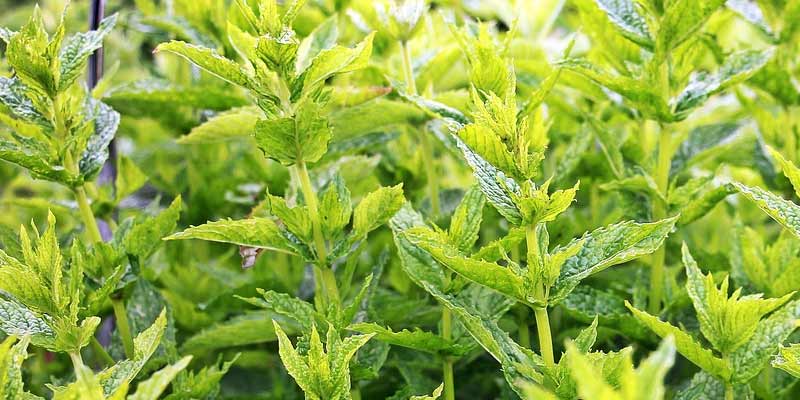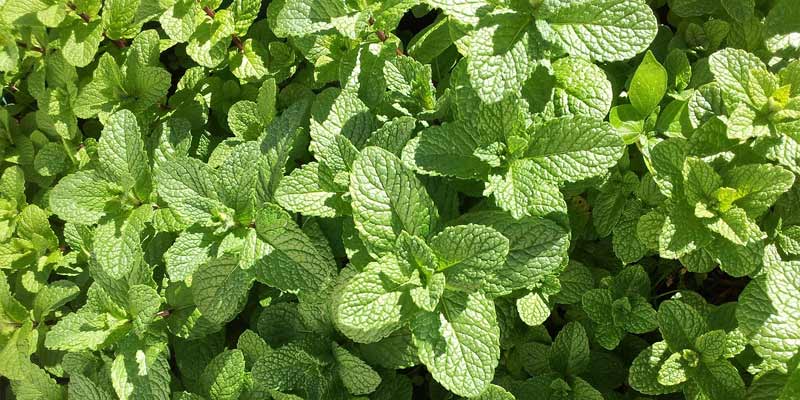With its aromatic leaves and versatile culinary uses, mint serves as a staple herb in numerous gardens and kitchens globally. Whether one cultivates spearmint, peppermint, or any other variant of this plant; comprehending the sunlight requirements for mint proves vital to fostering healthy growth – ultimately maximizing yield.
This article will delve into the factors influencing mint’s need for sunlight. It offers practical guidance on providing optimal light conditions – thereby ensuring thriving mint plants are nurtured.
Sunlight Requirements of Mint
Like all plants, mint relies on sunlight for photosynthesis; this is the process through which it converts light energy into chemical fuel for growth. The exacting demands of mint, its climate-sensitive nature, varietal specificity, and growth-stage nuances dictate varying requirements in terms of exposure to solar rays.
Mint typically thrives under ideal sunlight conditions: ample exposure to sunlight, balanced with a touch of shade especially in regions grappling with intense heat or enduring prolonged periods of sun exposure.
It is thus crucial that we understand the optimal balance for mint plants regarding sunlight; it not only promotes vigorous growth and enhances flavor but also prevents issues like sunburn and wilting.
3 Factors Influencing Mint’s Sunlight Needs
1. Climate
The sunlight needs of mint plants significantly depend on climate. Mints, in regions boasting mild temperatures and abundant sunshine, can withstand more direct exposure to sunlight without experiencing detrimental effects.
Contrastingly, in hot arid climates excessive sun exposure may induce heat stress and dehydration; thus necessitating protection from scorching through either partial shade or filtered sunlight.
2. Variety
Varying tolerance levels to sunlight may exist among different varieties of mint: some thrive in full-sun conditions, while others prefer partial shade or dappled sunlight, these options prevent leaf scorching and promote optimal growth.
To provide suitable light conditions, it is essential to understand the specific requirements of the variety you are cultivating.
3. Stage of Growth
Indeed, the sunlight needs of mint also vary with its growth stage. Young mint plants and newly established transplants—more sensitive to intense sunlight—may necessitate partial shade. This provision not only prevents stress but also promotes root development.
As these vegetation mature, their tolerance for direct sunlight may increase; however, essential monitoring of light conditions remains a critical factor in achieving optimal growth.
5 Sunlight Tips for Growing Mint
1. Select a Suitable Location
Consider your climate and the specific mint variety you are cultivating when choosing a plantation location that receives partial to full sunlight. The ideal light balance for your mint plants can be achieved by taking into account factors such as morning sun exposure and afternoon shade.
2. Observe Sun Patterns
Throughout the day, observe your garden’s sunlight patterns; this will allow you to pinpoint areas boasting optimal light conditions for growing mint.
However, be vigilant: any spaces receiving excessive heat or prolonged sunlight may necessitate shading or protection for the mint plants.
3. Provide Afternoon Shade
Consider offering afternoon shade to mint plants in regions with intense afternoon sun; this precaution prevents leaf scorching and heat stress. The strategy of planting mint near taller plants or structures, those that provide shade during peak heat hours serves as an effective shield against excessive sunlight exposure for the vegetation.
4. Monitor Leaf Color and Growth
As indicators of sunlight adequacy, actively monitor the color and growth of mint leaves. Vibrant green leaves with robust growth typify healthy mint plants; however, pale or yellowish appearances may suggest insufficient sunlight.
Conversely, excessive sun exposure might signal itself through leaf scorching or wilting.
5. Rotate Plantings
Periodically rotate mint plantings to balance their sunlight exposure and prevent soil depletion. Through this rotation, you can ensure different areas of your garden receive adequate sunlight; simultaneously, it allows the soil a crucial period for nutrient replenishment.
Conclusion
Essential to successful cultivation and abundant harvests of mints, understanding the sunlight requirements of these plants presents itself as a crucial task. Gardeners hold the power to promote healthy growth, enrich flavor – even prevent issues like sunburn or wilting – by striking an ideal balance between sunlight exposure and shade provision.
No matter if you choose containers over raised beds; or garden plots instead, paying close attention to your plant’s conditions—specifically adjusting for optimal light—is key in ensuring thriving mint specimens that offer up bountiful supplies of fresh aromatic leaves – perfect for culinary delights or refreshing beverages.


Leave a Reply